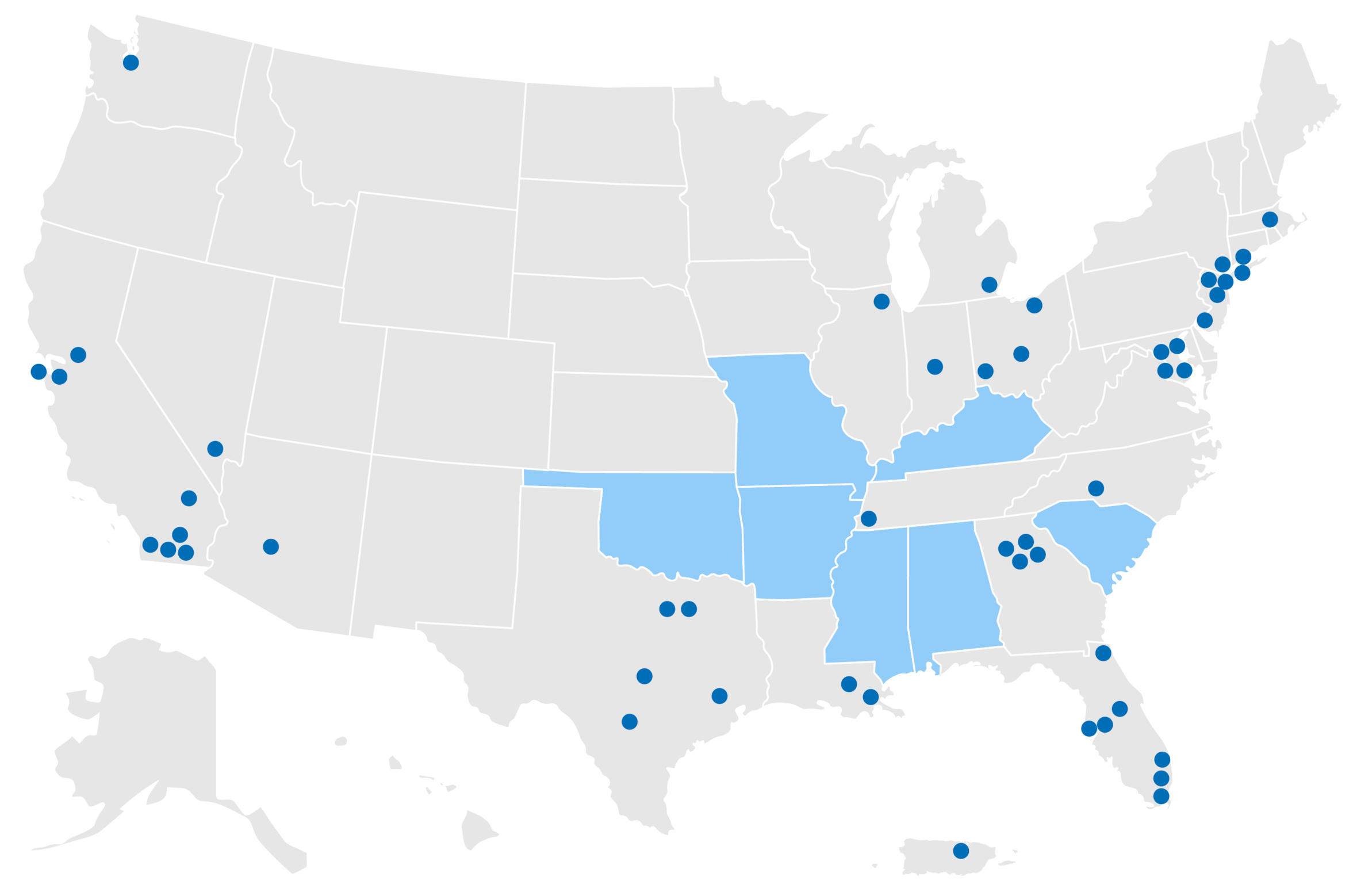EHE Plans and Websites
Now is the time for bolder, more collaborative action. While an effective national strategy and federal resources are central to ending the epidemic, HIV prevention ultimately happens at the community level. Success will require continued commitment by, and partnerships among, state and local governments, health officials, community organizations, healthcare providers, people with HIV, and others who could benefit from HIV prevention, care, and treatment services.
To achieve the goal of reducing new HIV infections in the United States by 75% by 2025 and 90% by 2030, health departments and community partners are working collaboratively to develop and implement plans to End the HIV Epidemic (EHE). The planning process includes engagement of the community, HIV planning bodies, HIV prevention and care providers, and other partners in aligning resources and activities to develop jurisdictional EHE plans. EHE plans are based on four pillars: Diagnose, Treat, Prevent, and Respond, and serve as a jurisdiction-specific roadmap to guide community and health department collaborations and programs/services implementation.
Through PS19-1906 Component B, all Phase 1 jurisdictions were required to feature their EHE plans on a public-facing website. The table featured below provides direct access to these established Phase 1 EHE websites and plans. Though the funded EHE planning period for CDC PS19-1906 Component B has ended and all plans have been submitted to CDC, all EHE plans are living documents and will serve as blueprints for local or jurisdictional EHE implementation activities. Phase 1 jurisdictions are committed to continuous evaluation and will adjust plans based on ongoing local feedback and progress of their implementation activities. The table will be updated as plans become available to NASTAD.

| jurisdiction | type | website | plan |
|---|---|---|---|
| Alabama | State/Territory | ||
| Arkansas | State/Territory | ||
| Kentucky | State/Territory | ||
| Mississippi | State/Territory | ||
| Missouri | State/Territory | ||
| Oklahoma | State/Territory | ||
| South Carolina | State/Territory | South Carolina EHE website | |
| San Juan Municipio | State/Territory | ||
| Maricopa County, AZ | Local | ||
| Alameda County, CA | Local | ||
| Los Angeles County, CA | Local | ||
| Orange County, CA | Local | ||
| Riverside County, CA | Local | ||
| Sacramento County, CA | Local | ||
| San Bernardino County, CA | Local | ||
| San Diego County, CA | Local | ||
| San Francisco County, CA | Local | ||
| Broward County, FL | Local | ||
| Duval County. FL | Local | ||
| Hillsborough County, FL | Local | ||
| Miami-Dade County, FL | Local | ||
| Orange County, FL | Local | ||
| Palm Beach County, FL | Local | ||
| Pinellas County, FL | Local | ||
| Cobb County, GA | Local | ||
| DeKalb County, GA | Local | ||
| Fulton County, GA | Local | ||
| Gwinnett County, GA | Local | ||
| Cook County, IL | Local | ||
| Marion County, IN | Local | ||
| East Baton Rouge Parish, LA | Local | ||
| Orleans Parish, LA | Local | ||
| Baltimore City, MD | Local | ||
| Montgomery County, MD | Local | ||
| Prince George's County, MD | Local | ||
| Suffolk County, MA | Local | ||
| Wayne County, MI | Local | ||
| Clark County, NV | Local | ||
| Essex County, NJ | Local | ||
| Hudson County, NJ | Local | ||
| Bronx County, NY | Local | Bronx County EHE website: Not yet available |
|
| Kings County, NY | Local | Kings County EHE website: Not yet available |
|
| New York County, NY | Local | New York County EHE website: Not yet available |
|
| Queens County, NY | Local | Queens County EHE website: Not yet available |
|
| Mecklenburg County, NC | Local | ||
| Cuyahoga County, OH | Local | ||
| Franklin County, OH | Local | ||
| Hamilton County, OH | Local | ||
| Philadelphia County, PA | Local | ||
| Shelby County, TN | Local | ||
| Bexar County, TX | Local | ||
| Dallas County, TX | Local | ||
| Harris County, TX | Local | ||
| Tarrant County, TX | Local | ||
| Travis County, TX | Local | ||
| King County, WA | Local | ||
| Washington, DC | Local |
Please email Krupa Mehta additional Phase I EHE plans for inclusion in this resource as well as any changes to existing plans. For jurisdiction-specific contact information, please visit the online directory.